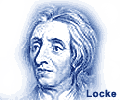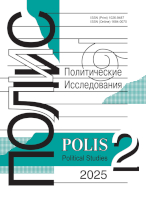Symbolic geopolitical capital and urban space
Axenov K.E.,
Saint Petersburg State University, Saint Petersburg, Russia, axenov@peterlink.ru
elibrary_id: 73892 | ORCID: 0000-0002-4728-0121 |
Article received: 2023.03.06. Accepted: 2023.06.28

DOI: 10.17976/jpps/2024.01.06
EDN: EXIXCQ
Axenov K.E. Symbolic geopolitical capital and urban space. – Polis. Political Studies. 2024. No. 1. https://doi.org/10.17976/jpps/2024.01.06. EDN: EXIXCQ (In Russ.)
The purpose of the work is to identify a special subject area in the research of symbolic capital of cities – symbolic geopolitical capital – and to identify its connection with urban space. The author defines environmental symbolic resources – urban signs or symbol carriers – the category of symbolic geopolitical capital (SGC), reveals their structure based on the applied example of St. Petersburg, as well as the principles of interaction with the urban environment and some ways in which SGK in symbolic politics are determined. The material carriers of symbols have at least four special properties that give the actors of urban symbolic politics an advantage when using these carriers in a competitive struggle: the duration of their existence and anchoring in the fabric of the city; the power of nomination – ideas about their legitimacy and public recognition; they are more likely to be encoded by the consciousness of the citizen in the form of a priori “normal”, “comfortable” and positive perception; and they provide the actors of symbolic politics with special means of political maneuver, using the principle of separation and variability of interpretations of such signs. In addition to the principles of placement described for each category of signs, their generalized types are highlighted: spatial concentration, spatial confinement, spatial hierarchy and effective spatial representation. The means of symbolic management using SGC are described, such as: all kinds of physical actions with the carriers themselves; activism correlated with them; producing new political meanings of their nominations and renominations; reinterpretation of existing and production of new symbols and associated signs, thereby – the production of new symbolic resources and the reconfiguration of the symbolic space of the city. Examples are given of urban conflicts related to geopolitical urban signs reflected in public discourse. They are grouped by potential sources of conflictogenicity due to the different attitudes of actors to: practices and manifestations of territorial strategies, their results and consequences; concepts and proposed worldviews; ideas about control over territory. A number of principles and patterns for the formation and use of symbolic geopolitical capital associated with urban space in politics are formulated: specialization in the nomination, the “latent” nature of the potential for conflict inherent in the SGC, the change of hierarchies, stages or “waves” of geopolitical symbolic policy in urban space, the formation of a “geopolitical symbolic footprint”.
References
Britvin, A., Britvina, I., Starostova, L., & Compte-Pujol, M. (2020). Symbolic capital as a resource of promotion of provincial cities: an analysis of place branding strategies of Ural urban destinations. Folklore: Electronic Journal of Folklore, 79, 184-202. https://doi.org/10.7592/FEJF2020.79.ural
Eisenstadt, S.N., & Schluchter, W. (1998). Introduction: paths to early modernities: a comparative view. In Public Spheres and Collective Identities (pp. 1-18). Routledge. https://doi.org/10.4324/9781351307567-1
Flint, С. (2012). Introduction to geopolitics. London: Routledge. https://doi.org/10.4324/9780203816752
Forest, B., & Johnson, J. (2011). Monumental Politics: Regime Type and Public Memory in Post-Communist States. Post-Soviet Affairs, 27(3), 269-288. https://doi.org/10.2747/1060-586X.27.3.269
Krzyżanowska, N. (2016). The discourse of counter-monuments: semiotics of material commemoration in contemporary urban spaces. Social Semiotics, 26(5), 465-485. https://doi.org/10.1080/10350330.2015.1096132
Lehti, M., Jokisipila, M., & Jutila, M. (2008). Never-ending Second World War: public performances of national dignity and the drama of the Bronze Soldier. Journal of Baltic Studies, 39(4), 393-418. https://doi.org/10.1080/01629770802461175
Lenntrop, B. (2008). Innovation diffusion as spatial process (1953): Törsten Hägerstrand. In P. Hubbard, R. Kitchin, & G. Valentine (Ed.) Key Texts in Human Geography (pp. 1-9). London: SAGE Publications. https://doi.org/10.4135/9781446213742.n1
Nas, P.J.M., Jaffe, R., & Samuels, A. (2006). Urban symbolic ecology and the hypercity: state of the art and challenges for the future. In Hypercity: The symbolic Side of Urbanism (pp. 1-20). London, Bahrain, New York: Kegan Paul.
O’Loughlin, J.V. (1994). Introduction. In J.V. O’Loughlin (Ed.) Dictionary of Geopolitics. Conn: Greenwood Press.
Rogers, E.M. (2003). Diffusion of Innovations. New York: Free Press.
Shevchenko, O.M. (2019). Current geopolitical transformation as a factor identity in mainstreaming in Eurasia. Caucasian Science Bridge, 2(2), 10-15.
Abalmasova, N.E. (2015). Technologies “symbolic management” in Russian regional policy. Vestnik Volgogradskogo gosudarstvennogo universiteta. Seriya 4. Istoriya. Regionovedenie. Mezhdunarodnye otnosheniya, 1, 132-137. (In Russ.)
Abashev, V.V. (2015). Perm monumental rhetoric of local identity: monuments, emblems and art objects in the city space. Labirint. Zhurnal sotsial’no-gumanitarnykh issledovanii, 1, 66-79. (In Russ.)
Aksenov K.E., & Gres R.A. (2023). Geopolitical symbolic capital and monumental space of cities in the North-West of the Russian Federation. Geographical Environment and Living Systems, 2, 113-137. (In Russ.)
Antonov, V.V., & Kobak, A.V. (2003). Svyatyni Sankt-Peterburga: Khristianskaya istoriko-tserkovnaya entsiklopediya [Shrines of St. Petersburg: Christian historical and church encyclopedia]. Saint Petersburg: Liki Rossii. (In Russ.)
Axenov, K.E. (2020). Geographic patterns of de-Sovietization of toponymy in Russian cities. Proceedings of the Russian Geographical Society, 3(152), 1-16. (In Russ.)
Axenov, K.E., & Andreev, M.V. (2022). Urban forms of spatial diffusion of geopolitical innovations in the Russian Federation. Izvestiya Rossiiskoi Akademii Nauk. Seriya Geograficheskaya, 6, 870-887. (In Russ.) https://doi.org/10.31857/S2587556621060030
Axenov, K.E., & Yaralyan, S.A. (2012). Ideological reloading of cityscape with the use of toponomics in CIS countries. Regional’nye issledovaniya, 1, 3-11. (In Russ.)
Baburin, V.L. (2002). Innovacionnye cikly v rossijskoj jekonomike [Cycles of Innovations in Russian Economics]. Moscow: URSS. (In Russ.)
Bourdieu, P. (2001). Les Editions de Minuit. (Russ. ed.: Bourdieu, P. Prakticheskii smysl. Saint Petersburg: Aletheia).
Bourdieu, P. (2002). Ökonomisches Kapital, kulturelles Kapital, soziales Kapital. (Russ. ed.: Bourdieu, P. Forms of capital. Ekonomicheskaya sociologiya, 5, 60-74).
Datsishina, M.V. (2020). Place renaming and German policy-making in temporarily occupied soviet territories. Problems of Onomastics, 17(1), 113-135. (In Russ.) https://doi.org/10.15826/vopr_onom.2020.17.1.006
Dementieva, I.N. (2013). Theoretical and methodological approaches to the study of social protest in Russian and foreign science. Monitoring of Public Opinion: Economic and Social Changes Journal, 4, 3-12. (In Russ.)
Efremova, V.N. (2015). On some theoretical features of the study of symbolic politics. Symbolic Politics, 3, 50-65. (In Russ.)
Fedotova, N.G. (2017). The role of media communications in the formation of the symbolic capital of a place. International Journal of Cultural Research, 2, 65-76. (In Russ.)
Fedotova, N.G. (2018). Symbolic capital of the place: notion, peculiarities of accumulation, research methods. Tomsk State University Journal of Cultural Studies and Art History, 29, 141-155. (In Russ.) https://doi.org/10.17223/22220836/29/13
Fedotova, N.G. (2020). Practices of urban commemoration: features of the city cultural memory formation. Tomsk State University Journal of Cultural Studies and Art History, 39, 130-143. (In Russ.) https://doi.org/10.17223/22220836/39/12
Fedotova, N.G., & Vasil’eva, N.Yu. (2017). The symbolic capital of Veliky Novgorod in the discourse of social media. Znak: problemnoe pole mediaobrazovanija, 2, 119-127. (In Russ.)
Gadzhiev, K.S. (1997). Geopolitika [Geopolitics]. Moscow: Mezhdunarodnye otnosheniya. (In Russ.)
Gadzhiev, K.S. (2011). On the issue of geopolitical identity of Russia in the modern world. Vlast’, 6, 4-10. (In Russ.)
Galustov, K.A. (2016). Spatiotemporal models of the influence of environmental and eco-cultural protest on the use of urban space at the example of Leningrad-St. Petersburg. Vestnik SPbSU. Series 7. Geology. Geography, 3, 163-176. (In Russ.) https://doi.org/10.21638/11701/spbu07.2016.313
Gel’man, V.Ya. (2003). Political elites and strategies of regional identity. The Journal of Sociology and Social Anthropology, 6(2), 91-105. (In Russ.)
Gelman V., Ryzhenkov S., Bree M. (Ed.). (2000). Rossiya regionov: transformatsiya politicheskikh rezhimov [Russia of regions: transformation of political regimes]. Moscow: Ves’ mir. (In Russ.)
Gorbachevich, K.S., & Khablo, E.P. (2007). Pochemu tak nazvany? O proiskhozhdenii nazvanii ulits, ploshchadei, ostrovov, rek i mostov Sankt-Peterburga [Why are they named like that? On the origin of the names of streets, squares, islands, rivers and bridges of St. Petersburg]. Saint Petersburg: Norint. (In Russ.)
Kostyashov, Yu.V., & Zhirov, A.A. (2020). De-Germanization policy in recovered territories in Poland after World War II: linguistic aspect. Istoriya, 7, 25. (In Russ.) https://doi.org/10.18254/S207987840010094-2
Kretinin, G.V., Maslov, E.A., & Mironyuk, D.A. (2018). Formirovanie memorial’no-monumental’nogo landshafta pamyati v Kaliningradskoi oblasti Rossiiskoi Federatsii [Formation of a memorial and monumental landscape of memory in the Kaliningrad region of the Russian Federation]. In Kretinin, G. (Ed.), Voina i mir: issledovaniya po rossiiskoi i vseobshchei istorii [War and Peace: Studies in Russian and World History] (pp. 386-403). Kaliningrad: Kaliningradskii oblastnoi istoriko-khudozhestvennyi muzei. (In Russ.)
Kukushkina, V.V. (2000). Toponimika Peterburga-Petrograda vtoroi poloviny XIX – nachala XX vv. (do 1917 g.) po planam goroda [Toponymy of St. Petersburg-Petrograd in the second half of the 19th – early 20th centuries (before 1917) according to city plans]. Saint Petersburg: Izdatel’stvo RNB. (In Russ.)
Malakhov, V.S., & Letnyakov, D.E. (2023). The collapse of hegemonial normality: migration and the politics of memory in the U.S., UK and France. Polis. Political Studies, 1, 60-74. (In Russ.). https://doi.org/10.17976/jpps/2023.01.06
Malinova, O.Yu. (2010). Symbolic politics and the constructing of macro-political identity in post-Soviet Russia. Polis. Political Studies, 2, 90-105. (In Russ.)
Malinova, O.Yu. (2019). Politics of memory as a branch of symbolic politics. Method: Moscow Yearbook of Social Studies, 9, 285-312. (In Russ.)
Medvedev, I.R. (2017). Resolution of urban conflicts. Moscow: Infotropik Media. (In Russ.)
Medvedev, I.R. (2019). Place naming disputes in relation to the “right to the city”. Zakon, 4, 144-156. (In Russ.)
Mokhov, S.V. (2011). City monument as a nation-building tool: symbolic space and historical memory. Biznes. Obshchestvo. Vlast’, 7, 17-29. (In Russ.)
Podol’skaya, N.V. (1988). Slovar’ russkoi onomasticheskoi terminologii [Dictionary of Russian onomastic terminology]. Moscow: Nauka. (In Russ.)
Poliakova, N.V. (2019). On symbolic aspects of the modern Belarusian politics of memory: nationalism vs zapadnorusizm. Tomsk State University Journal of Philosophy, Sociology and Political Science, 52, 205-212. (In Russ.) https://doi.org/10.17223/1998863X/52/19
Polushkevich, O.A. (2017). The influence of toponymy on the identity of city residents (based on materials from Irkutsk). Administrative Consulting, 11, 80-94. (In Russ.) https://doi.org/10.22394/1726-1139-2017-11-80-94
Potseluyev, S.P. (1999). Symbolical politics: a constellation of concepts for an approach to the problem. Polis. Political Studies, 5, 62-75. (In Russ.)
Prokhorova, T.V. (2006). Regimental churches of St. Petersburg. Proceedings of the St. Petersburg State Institute of Culture, 171, 299-321. (In Russ.)
Rublyova, O.I. (2016). Toponymic system of Primorye: aspects and research perspectives. Oriental Institute Journal, 4, 35-44. (In Russ.)
Tkhakakhov, V.Kh. (2019). Identity and memory in the toponymic politics of Chechnya. Scientific Thought of Caucasus, 2, 40-49. (In Russ.) https://doi.org/10.18522/2072-0181-2019-98-2-40-49
Treivish, A.I. (2009). Gorod, rajon, strana i mir [City, district, country and the world]. Moscow: Novy Chronograph. (In Russ.)
Trubina, E.G. (2009). Vidimoe i nevidimoe v povsednevnosti gorodov [Visible and invisible in everyday life of cities]. In P.V. Romanova, E.R. Yarskaya-Smirnova (Ed.), Vizual’naya antropologiya: gorodskie karty pamyati [Visual Anthropology: Urban Memory Maps] (pp. 17-45). Moscow: OOO “Variant”, TsSPGI. (In Russ.)
Tykanova, E.V. (2013). The influence of urban political regimes on city space contestation (the case of St. Petersburg and Paris). The Journal of Sociology and Social Anthropology, 3, 112-123. (In Russ.)
Volodina, A.V. (2019). After the Bronze Night: 9 May in contemporary Estonia. Central-European Studies, 1, 289-301. (In Russ.) https://doi.org/10.31168/2619-0877.2018.1.15
Vysokovskii, A.A. (1990). Substantsional’nye svoistva sredy [Substantial properties of the environment]. In A. Vysokovskii, & G. Kaganov (Ed.), Gorodskaya sreda: problemy sushchestvovaniya [Urban Environment: Problems of Existence] (pp. 15-53). Moscow: VNIITAG. (In Russ.)
Zamyatin, D.N. (2003). The geopolitics of images and the structuring of meta-expanse. Polis. Political Studies, 1, 82-102. (In Russ.) https://doi.org/10.17976/jpps/2003.01.08
Zamyatin, D.N. (2004). Vlast’ prostranstva i prostranstvo vlasti: Geograficheskie obrazy v politike i mezhdunarodnykh otnosheniyakh [The power of space and the space of power: geographical images in politics and international relations]. Moscow: ROSSPEN. (In Russ.)
See also:
Utkin A.I.,
Energy resources and geopolitics. – Polis. Political Studies. 2010. No3
Isayev B.A.,
Geopolitics: classical and modern. – Polis. Political Studies. 2011. No2
Bardin A.L., Pantin V.I.,
Responsible urban development policy: criteria, subjects, prospects. – Polis. Political Studies. 2024. No5
Fadeyeva L.A.,
Urbanity in the political-science dimension. – Polis. Political Studies. 2014. No1
Akhremenko A.S.,
Effectiveness of public investment: a «Model-to-evaluation» strategy. – Polis. Political Studies. 2014. No6





.jpg)






 print
print
.jpg)
.jpg)